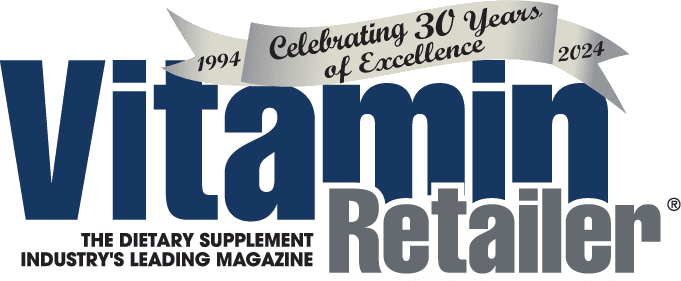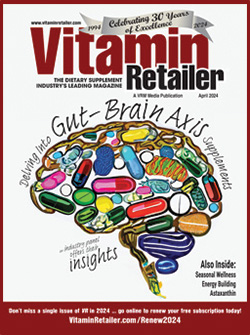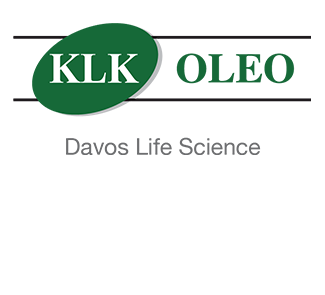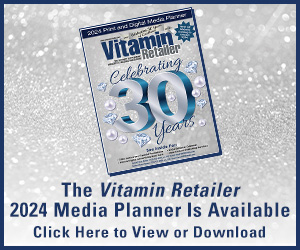If there is one universal concept across retail managers, it’s the constant battle against time—there’s always more to do than there are hours in the day. This relentless pace typically results in extended work periods, tirelessly tackling a to-do list that only seems to grow and never shrink, while focusing primarily on those critical tasks essential for keeping the business afloat.
Marketing, a key component for any business, often falls by the wayside in this hustle. However, there’s a silver lining: several straightforward strategies can streamline your marketing efforts, reduce the time investment required and help drive new customers into your store (and build baskets) without the need to burn the candle at both ends.
One of the biggest lessons in marketing is that, often, repetition is a good thing. While many business owners get concerned that they have used an ad or other piece of creative too many times, often accompanied with remarks like “we can’t use the same ad again—I’m tired of seeing it!” the reality is, this is almost never the case. It’s crucial to remember that your customers are not as immersed in your marketing materials as you are.
Let’s look at some simple considerations to streamline your marketing and save time.
Automate eCommunication
Email blasts, social media posts, newsletters and more, regardless of frequency, can lead to creative blocks as you try to come up with fresh content. While these can be powerful tools for engaging with your audience, automation can significantly lighten the load. Automated communication tools enable you to keep in touch with your customers without the constant struggle for new ideas.
The best approach here is integrated communications with your loyalty program. Setting up automatic thank-you emails post-visit or reminder emails for customers who haven’t been active recently, possibly with a coupon or other incentive to return, can significantly enhance customer engagement. These automated efforts can be tailored to fit your specific data structure and are supported by many leading email platforms, including Klaviyo, Mailchimp and Active Campaign.
Also, look for communication vehicles that can be consistent. For example, you could conduct a quarterly customer survey. Not only does it provide valuable feedback on your business performance and customer needs, but it also allows you to reaffirm your commitment to your values with every email, serving a dual purpose. By doing this, if you’re sending out 52 emails annually, you’ve effectively automated four of those, which translates to about 7.7 percent of your email output. Come up with a few more ideas like this, and easily 25 percent or more of your content can be based on recurring concepts.
Standardize and Templatize
Does the design aesthetic or messaging for the holiday season really change much from year to year? Probably not. Inevitably, your store will be filled with red and green over Christmas, shades of orange around Halloween and Thanksgiving, and bright colors in the spring. Just as most people don’t totally replace their holiday décor every year, some of your marketing can be re-used too. If anything, take it as an opportunity to make incremental improvements.
Begin by identifying your most frequent marketing endeavors. If your calendar is packed with in-store events, you’re likely regularly crafting posters, social media content, registration forms, etc. Establish fundamental templates for these materials, enabling straightforward updates like swapping an image, tweaking dates/times, and modifying text. This approach ensures uniformity across your marketing materials, so if you update a flyer’s image, that same image should grace your social media posts, promoting a seamless visual identity for your campaigns and streamlining content creation.
A brand style guide that includes representative fonts, colors and image choices for your store can go a long way when used in tandem with a template.
Many design tools cater to this need for templates, with Canva and Adobe Spark standing out as particularly user-friendly for small businesses. These platforms offer intuitive drag-and-drop interfaces, making rapid content generation a reality.
Leverage Outsourcing
Sometimes we all need help. It may not always be feasible to do your marketing in-house each day. But how can you scale your marketing bandwidth cost effectively?
Exploring partnerships with local academic institutions can be a fruitful avenue. Many colleges and universities have students in marketing, design, journalism or related disciplines eager to gain real-world experience. Offering a rotating internship can be quite effective.
If local doesn’t work, platforms like 99Designs.com (by Vistaprint) provide a unique avenue for sourcing design work through contests, starting at prices as low as $150, giving you a variety of creative options to select from.
Similarly, Fiverr.com offers extremely low cost overseas design help—however, it’s important to expect to engage with several candidates before identifying someone who aligns with your expectations. As the adage goes, “do you want the work done fast, done cheap or done right? At best, you’ll be able to pick two of the three.”
For those seeking higher-caliber assistance, Upwork.com offers a platform where freelancers can bid on your projects. Additionally, Adobe’s behance.com is a showcase of professional portfolios from designers across the globe, many of whom are open to freelance contracts, providing a direct window into their capabilities.
Streamline Your Selection (Optimize Your Shelves)
While this advice may not be directly related to marketing, when you simplify your shelves, you open staff time.
There are some simple exercises that you can do with your staff to optimize your shelf. Walk up to any given shelf and look across all three or four feet. Ask yourself how many of the SKUs are redundant? For example, do you really need 30 different SKUs of vitamin C?
Simplifying your planograms to focus on top-selling, category-leading brands. Overwhelming customers with too many options might drive them to seek simplicity online. We can stop that by curating the experience.
Design your product range to cater to distinct customer preferences—those looking for value and those seeking premium products. This means selecting entry-level priced items and premium offerings, eliminating middling brands that don’t stand out or offer unique benefits. Highlight your confidence in the chosen products with increased facings.
Moreover, for your top products, consider introducing a smaller, more affordable size to encourage trial, followed by a larger size for satisfied customers. This strategy not only boosts sales but also enhances customer satisfaction by providing options that fit their needs and budgets.
Are brands doing their part to earn a space on your shelf? Are they leaders in their category, investing in marketing? Do they support the industry ethically, adhere to pricing policies, or engage in community-building activities, such as participating in trade shows, such as SOHO Expo, or supporting non-profit associations like SENPA.org? Brands that fail to meet these criteria might not deserve prime real estate in your store.
Embrace AI: A Marketing Game-Changer
In the realm of marketing, the integration of artificial intelligence (AI) is not just a trend; it’s a game-changer. Tools like ChatGPT or Google Gemini stand at the vanguard of this transformative wave, offering more than mere efficiency—they’re redefining the essence of creative marketing and strategic planning.
Think of these tools like personal assistants. They may not be everything you need in an employee, but they offer an opportunity to converse with a highly knowledgeable “expert” in almost any field imaginable.
AI can be used to create blogs, social media posts and more. These tools can even guide you on strategies for hosting staff meetings, setting up succession plans or promoting events. They can proofread your writing. The opportunities are endless.
A core area where AI is starting to shine is in data analysis. For example, the paid version of ChatGPT, GPT4, offers a tool called “Data Analyst” that can review your spreadsheets, create executive summaries and even check your calculations for accuracy. These tools excel in finding patterns in data—often core to developing insights. As always, be careful with information that you choose to share online.
While some users are finding success with AI-generated creative designs, I urge caution here. Many tools “aren’t quite there” and will produce assets that consumers will recognize as AI-generated. This is expected to improve rapidly, and AI image generation included in tools like Photoshop are generally far superior for commercial use than many other applications.
Emphasize Your Strengths: The Human Connection
For independent health food stores, the unique value proposition often lies not in trying to match the vast inventory or slashed prices of online giants but in the personal touch and specialized knowledge they can offer. Focusing on what sets your store apart—such as one-on-one consultations and customer education—can significantly amplify your impact without spreading your resources too thin on tasks outside of your core competencies.
One-on-one consultations represent a golden opportunity to deepen customer relationships and build trust. By offering personalized advice, tailored wellness plans or nutritional guidance, you establish your store as not just a retail space but a health and wellness hub. This direct engagement allows you to understand your customers’ unique needs and preferences, leading to better service and more targeted product offerings.
Customer education is another area where independent retailers can shine. Workshops, seminars and even informal discussions about health trends, dietary supplements, and wellness practices position your store as an authority in the health food domain. These educational initiatives not only attract a loyal customer base interested in healthy living but also foster a community of like-minded individuals who value your store’s expertise and personalized approach.
Final Thoughts
By adopting strategies, such as automation, templating, outsourcing, simplifying your inventory and leveraging AI, you can significantly enhance your marketing efforts without overextending your resources. Each of these strategies offers a unique advantage, from saving time to ensuring consistency in your brand messaging.
However, amidst these technological and strategic advancements, it’s crucial not to lose sight of what truly sets your business apart—the personalized attention and expert knowledge you offer through one-on-one consultations and customer education. These elements are the heart and soul of your independent retail store.
Remember that the goal is not to do everything but to do what you do best, more efficiently and effectively. By focusing on your strengths, you can create a sustainable and thriving business that stands out. Embrace the tools and techniques that align with your mission and values and continue to nurture the unique relationships you have with your customers. In doing so, you’ll not only achieve your marketing objectives but also reinforce the essence of what makes your health food store a vital part of your community.VR
Ryan Sensenbrenner leads retail marketing at Enzymedica, Inc. He is focused on developing programs to support independent health food stores and small chains across the nation. Passionate about the natural products industry, he has worked with retailers across the country to help them better market the strengths of their businesses, driving increased revenue and brand recognition within their communities. In addition to his role at Enzymedica, Sensenbrenner serves as a current member of the SENPA Board of Directors.









